Pisa is the capital of the province of the same name in the Tuscany region, worldwide known for its famous symbol, the Leaning Tower. But, Pisa offers a lot more to its visitors. The city is full of artistic and historical treasures, lively squares, and fascinating streets.
Many tourists do not know that Pisa is the birthplace of Galileo Galilei and that it was once part of the powerful Maritime Republic, together with Amalfi, Venice, and Genoa.
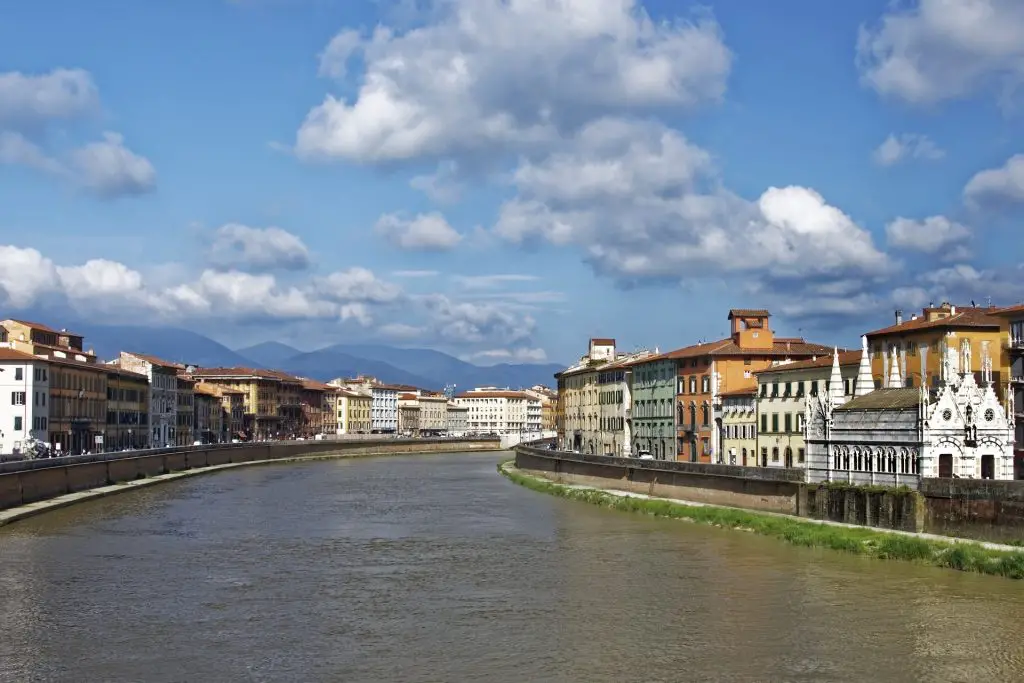
Besides, Pisa is also famous as one of the largest student cities in Italy, so do not be surprised to see many young people strolling around the city. In fact, around half of the city’s 90,000 residents are students. Therefore, if you love nightlife and hanging out with young people, Pisa is the right place for you.
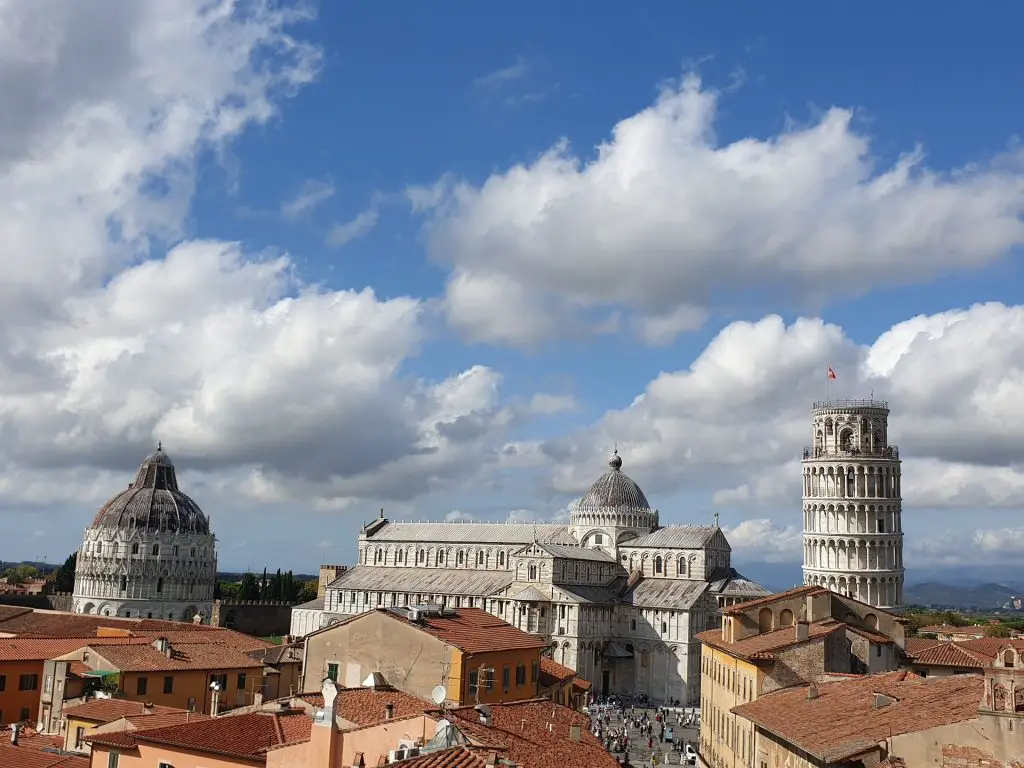
Most tourists come to Pisa only for a day, because it is enough time to visit most attractions. Still, keep in mind that Pisa is a very touristy city, and waiting lines could be pretty long for specific attractions. Those who like to stroll around the city should know that Pisa’s alleys and streets are not among the most beautiful in Tuscany. But, this lovely city also has its own charm and feels somehow authentic. Here are the best things to do in Pisa in one day:
Piazza dei Miracoli in Pisa
Piazza dei Miracoli, also known as Piazza del Duomo, is a huge magical green area on the outskirts of Pisa’s northwestern part. It is the most beautiful square in the city and the place where the Baptistery of Pisa, the Cathedral of Pisa, the Monumental Cemetery, and the Leaning Tower are located close to each other.
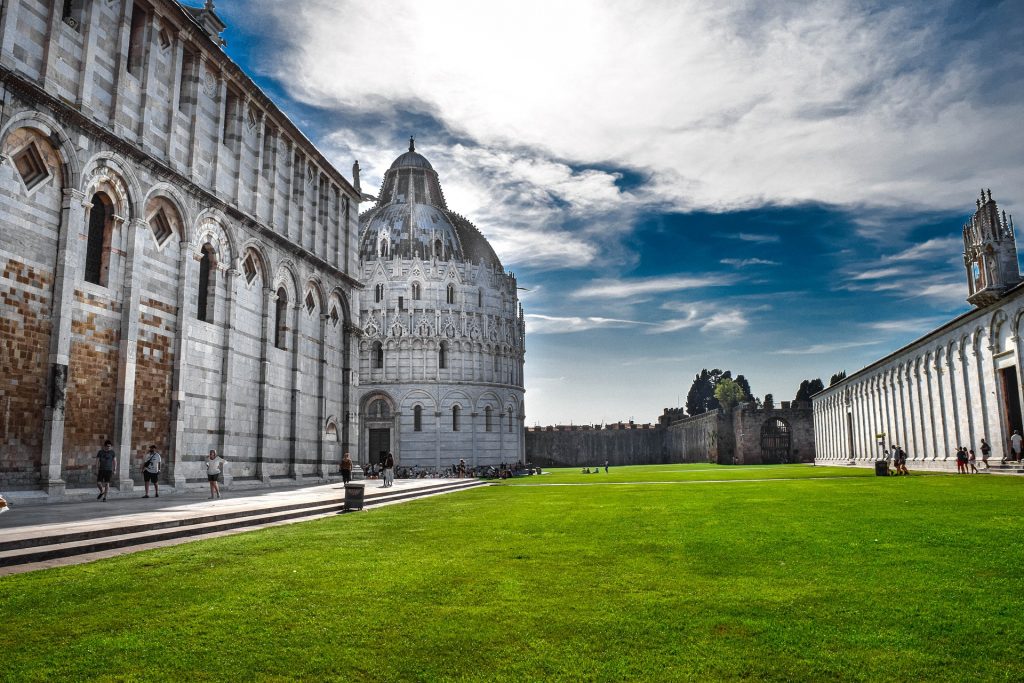
These wonderful buildings look like “miracles,” which is why this square got its name. In 1987, UNESCO recognized this square’s historical importance and beauty, and it was declared a UNESCO World Heritage Site.
Even though Piazza dei Miracoli is huge, it is usually very crowded due to its popularity and the fact that it is now allowed to walk in a green area, so everyone has to use only paved roads around the square.
The Leaning Tower in Pisa
The Leaning Tower is undoubtedly the most famous monument in Piazza dei Miracoli and one of the most famous in Italy. With a height of over 56 meters and a weight that exceeds 14,000 tons, it is a natural candidate to be one of the seven wonders of the modern world. Initially, the tower was supposed to be the free-standing bell tower of the Cathedral of Santa Maria Assunta.
The Leaning Tower of Pisa facts
The construction work of the bell tower began in 1173. But, it was interrupted in the middle of the third floor because the building started sinking into the ground. The workers found out that the ground was made up of soft and very clay-yielding soil. The work resumed in 1275, so the following three floors were built with a slight slope opposite to straighten the tower.
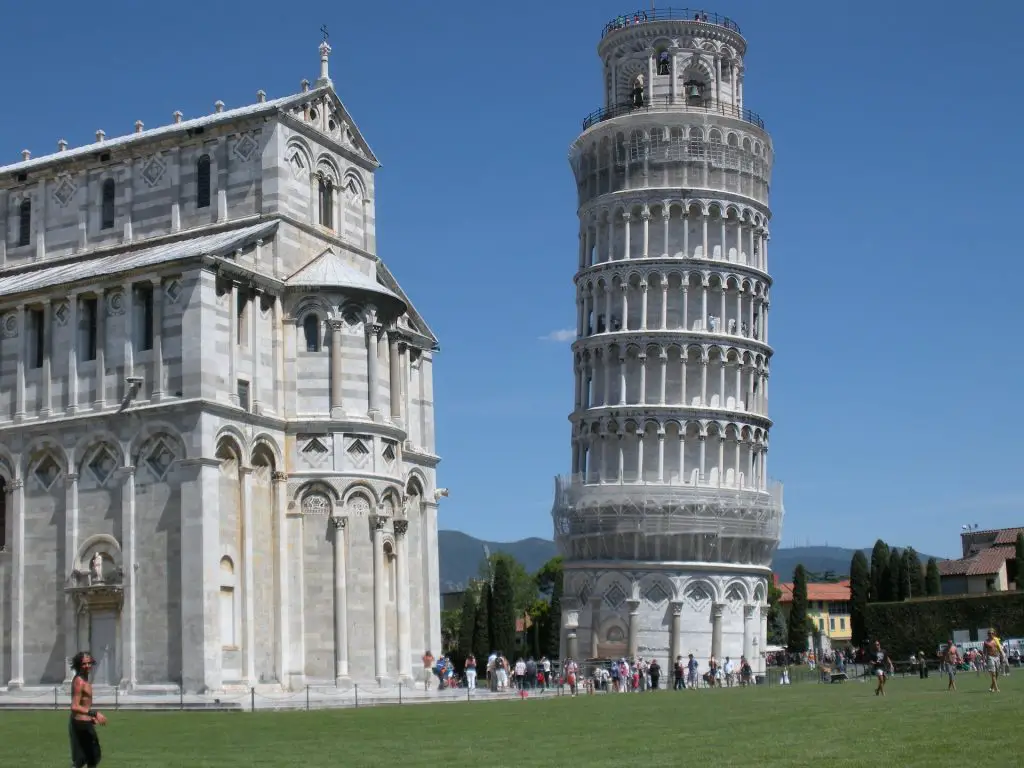
Over the centuries, the tower has been the subject of numerous restorations. They have reduced inclination, so today, the tower’s inclination is 4 °, which does not sound too dramatic at first. However, the tower is 56 meters high, resulting in a tilt of almost 4 meters which you can clearly see from a distance. The Leaning Tower was built with white Carrara marble, and inside, there are seven bells that used to be rung by hand.
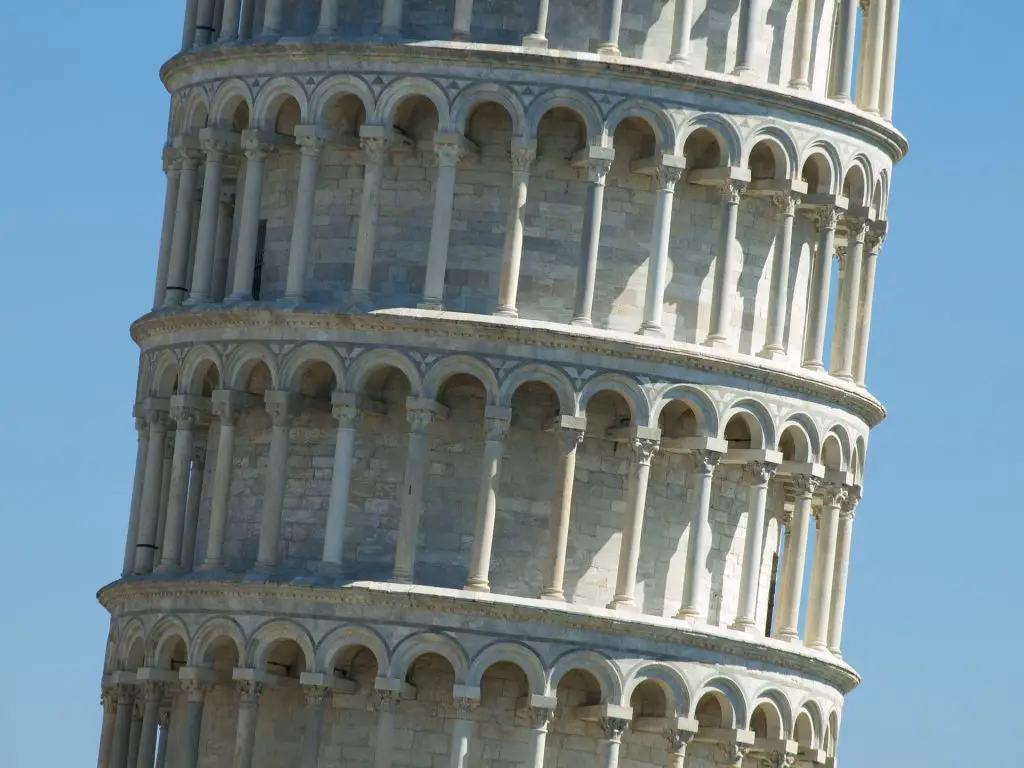
But, because of inclination, there was a risk that the tower would collapse if the heavy bells ring, so they have not been in use for a long time. Nowadays, there are electromagnetic hammers that sound the bell at noon every day.
Can you climb the Leaning Tower of Pisa?
In front of the Leaning Tower, you will see the crowd of tourists that take photos as souvenirs in perspective in which they “hold” the tower from falling. However, it is also possible to climb the tower on foot. You will have to climb 251 steps to get to the top. The ticket costs 18 euros and purchase is strongly recommended online because the tickets, divided by time slots, sell out very quickly.
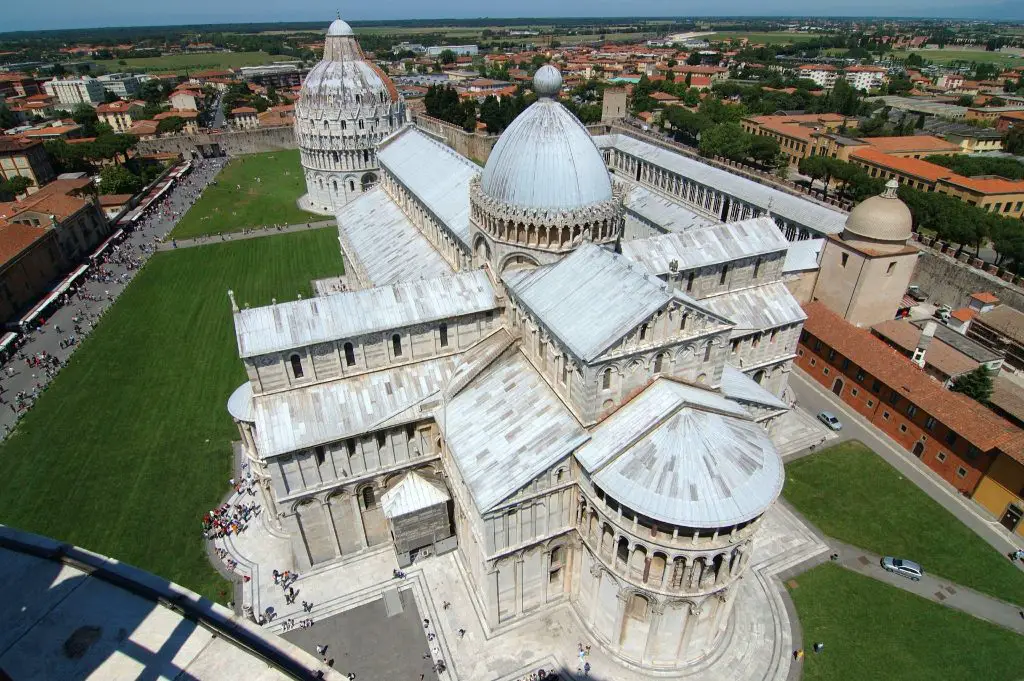
For safety reasons, entry is not allowed for children under the age of 8 and minors under 18 if they do not have adult accompaniment. Every 30 minutes, there is a tour of 40 people that are going to the top. You will have a nice view from the top, but the tour’s highlight is more the feeling when you climb the tower because of its inclined position.
The Cathedral of Pisa
The Pisa Cathedral is located right next to the Leaning Tower and, as you already know, also on the Piazza dei Miracoli. The church was built in Romanesque style, but it also has the Norman, Byzantine, Paleochristian, and Islamic elements due to the commercial contacts that the Pisans had with the Arab world at that time. Its construction began in the 11th century and was finished in the 17th century.
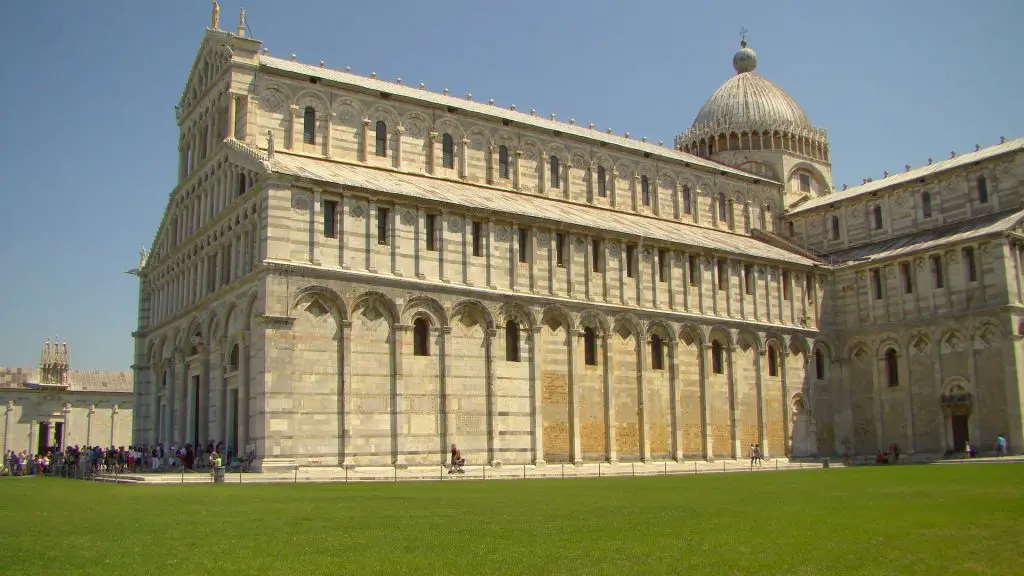
The facade is magnificent, with many columns and arches made of white marble, like the Leaning Tower. Inside, besides columns and arches, there is a beautiful golden ceiling, a gothic pulpit by Giovanni Pisano, the mosaic of Christ in Glory, and the Tomb of Emperor Arrigo VII.
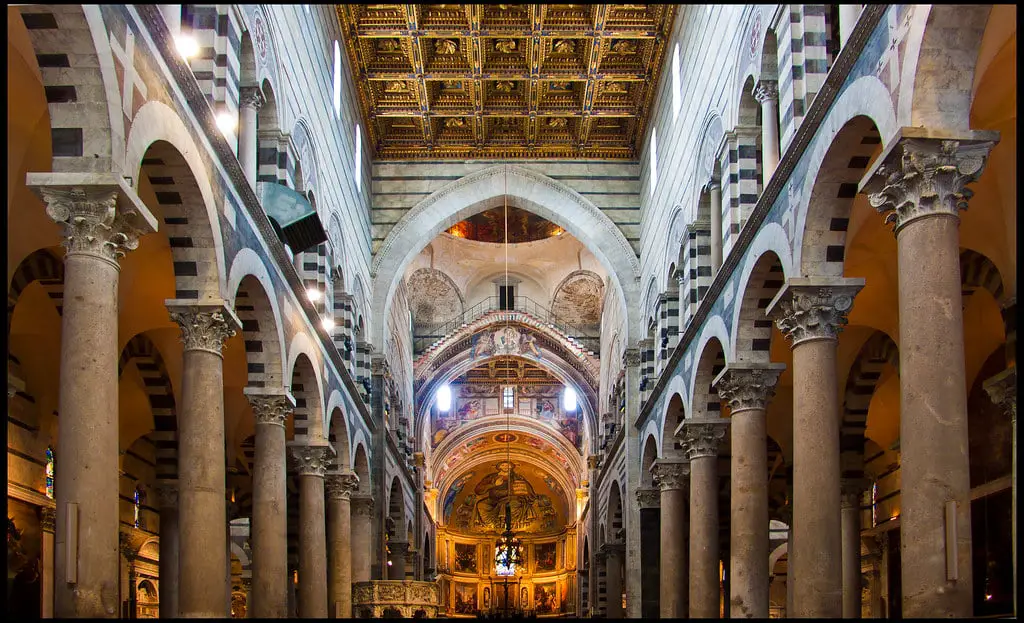
The entrance to the Cathedral is free for everyone, but a ticket is still required. You have to reserve your free hourly ticket at the ticket offices on the day of the visit.
The Baptistery of San Giovanni in Pisa
Located in front of the west facade of the Cathedral, the Baptistery dedicated to San Giovanni is another of the buildings that form the monumental complex of Piazza dei Miracoli. With a circumference of over 107 meters and 55 meters high, it is the largest baptistery in Italy and in the world. Its construction began in 1153 and was completed in 1363 with a marble decoration that combines the Pisan Romanesque style with the Gothic one.
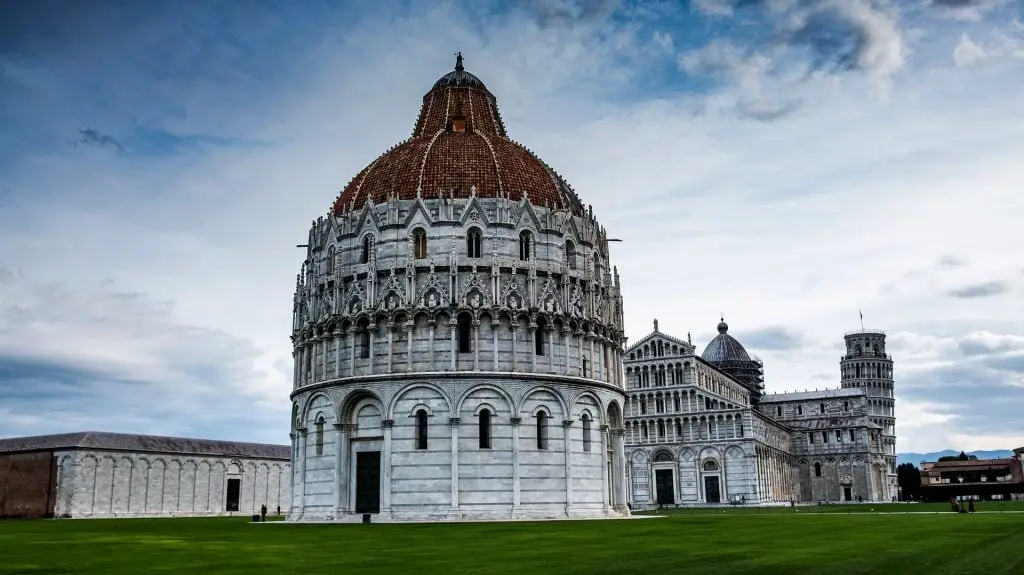
Inside, there are gorgeous decorations on the pulpit and the fountain. The Baptistery is also open for tourists, but you have to buy a ticket in advance for 5 euros. You can also buy a combined ticket that includes entrance to the Baptistery and the Cemetery.
The Monumental Cemetery in Pisa
The Monumental Cemetery, also known as the Camposanto, is a rectangular building with a beautiful interior courtyard. It was built in 1277 to collect the tombs and sarcophagi that were scattered around the Cathedral until then.
If you explore the cloister of this cemetery enclosed within white marble walls, you will find Roman sarcophagi, medieval frescoes, and the burial place of the famous mathematician Fibonacci.
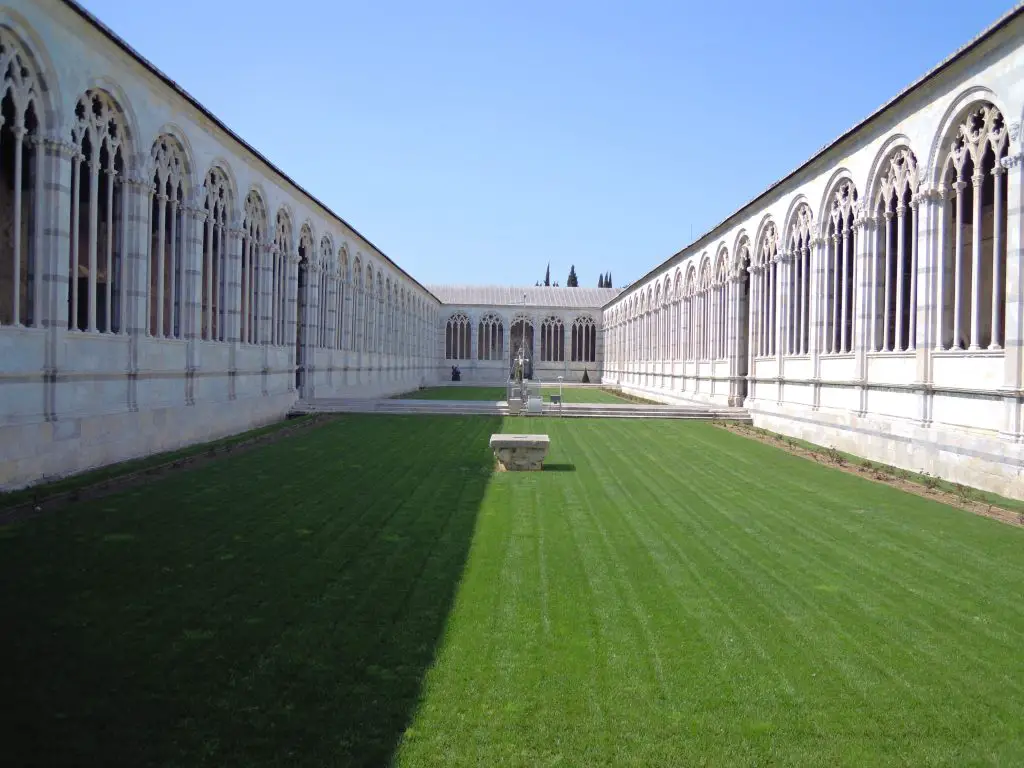
In the Aulla chapel, moreover, you will be able to see the “Galileo’s lamp” which hangs from the ceiling and, according to legend, inspired the Pisan scientist to write the theory of pendulum after he saw it swing. The ticket for the cemetery costs 5 euros or 7 euros in combination with the Baptistery.
Piazza dei Cavalieri in Pisa
Piazza dei Cavalieri or The Knight’s square is the second most beautiful square in the city after Piazza dei Miracoli that used to be the city’s main square. It was designed and enlarged by the famous architect Giorgio Vasari in 1562 in Renaissance style. At that time, this square was the center of political power in medieval Pisa.
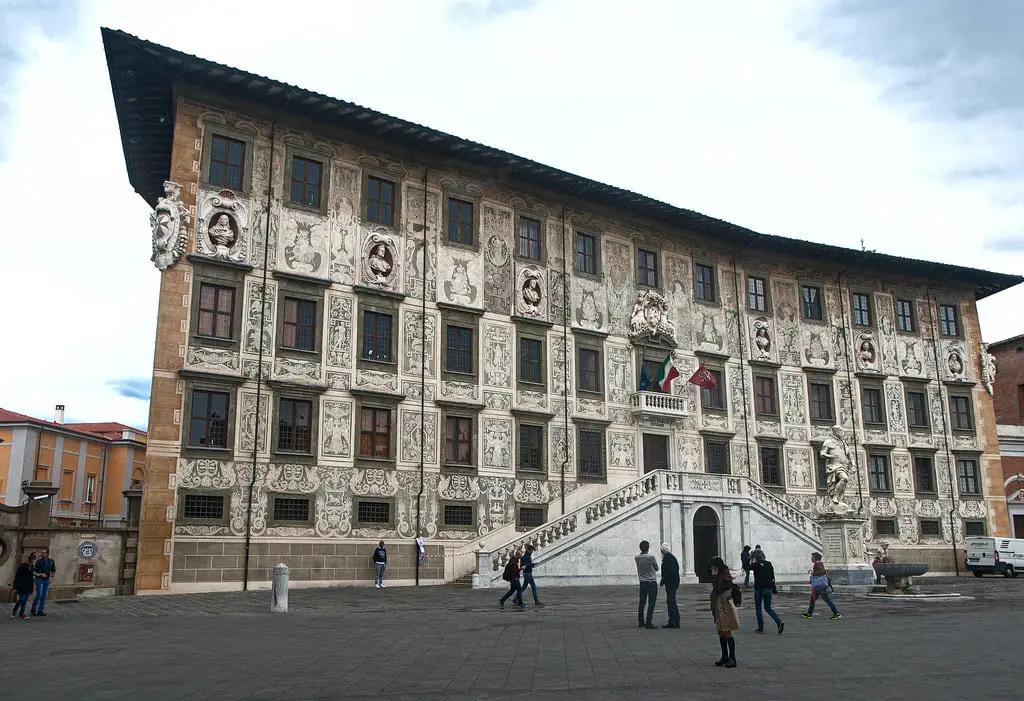
When you come to the square, the first building you will probably notice is the Palazzo dei Cavalieri, also known as Palazzo della Carovana. The front facade of this palace is truly magnificent and features spectacular stone statues depicting the Dukes of Tuscany. Nowadays, the palace is home to the prestigious Scuola Normale di Pisa, one of the oldest and most prestigious academic institutions in the world.
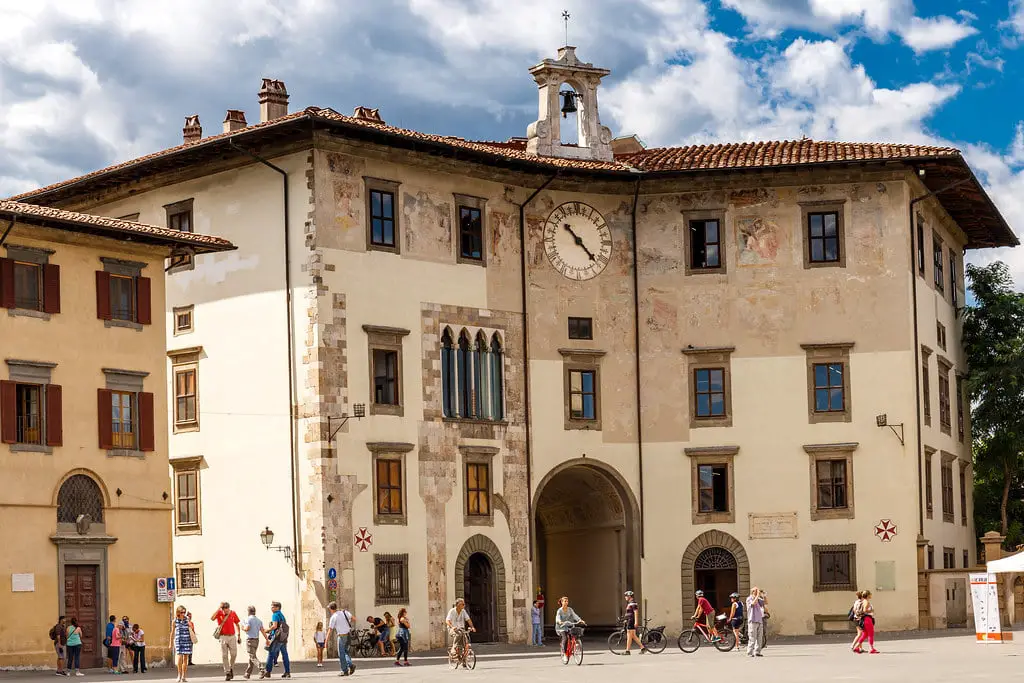
Other important buildings overlooking the square are the Church of Santo Stefano dei Cavalieri and the Palazzo dell Orologio. The church has quite an exciting interior that you can explore for free, while the Palazzo dell Orologio is known for one of its towers called Torre della Fame. It held prisoner Count Ugolino della Gherardesca at the end of the 13th century, mentioned by Dante Alighieri in his Divine Comedy.
Church of Santa Maria della Spina in Pisa
The church of Santa Maria della Spina is located on the left bank of the Arno river, and it is the only building built directly on the river promenade. The church has been there since the 13th century and has never been destroyed. Interestingly, it was dismantled in the nineteenth century and moved to a higher point of the river to prevent flooding.
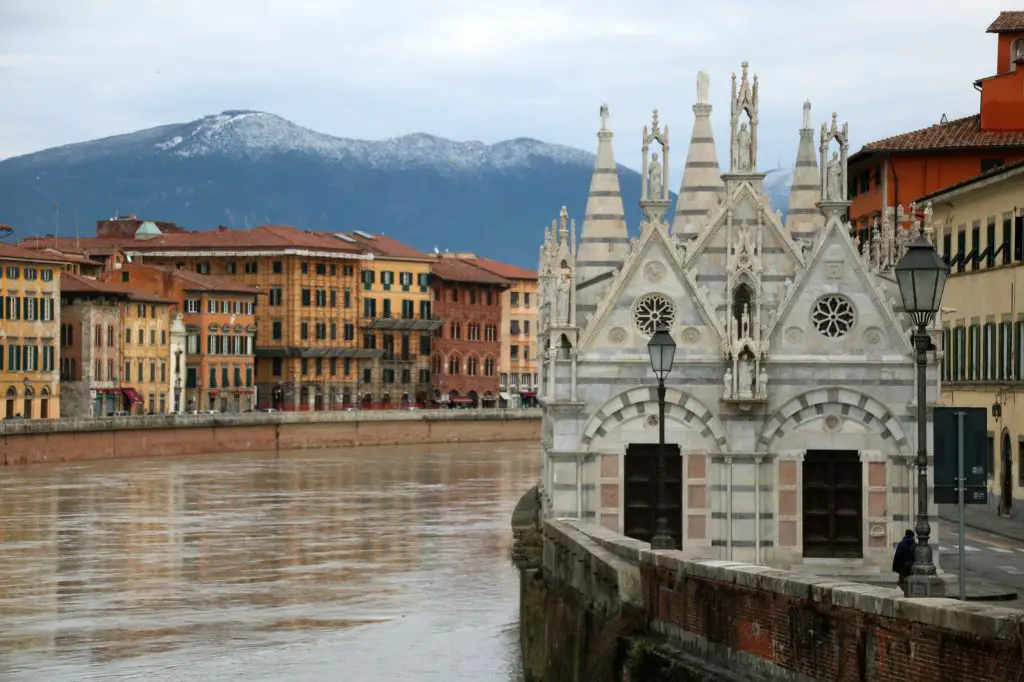
The Santa Maria della Spina was built of white marble and is considered one of the most famous examples of Pisan Gothic. Its name refers to the presence of a thorn from Christ’s crown, brought to Pisa by a local merchant on his return from the Holy Land. You can visit the church for free, but keep in mind that it is only open for visitors at set times.
Borgo Stretto in Pisa
Borgo Stretto is an ancient pedestrian street where you can walk under arcades between the shops, wine bars, and coffee tables. This charming street is located in the heart of the city and starts at Piazza Garibaldi next to Ponte di Mezzo.
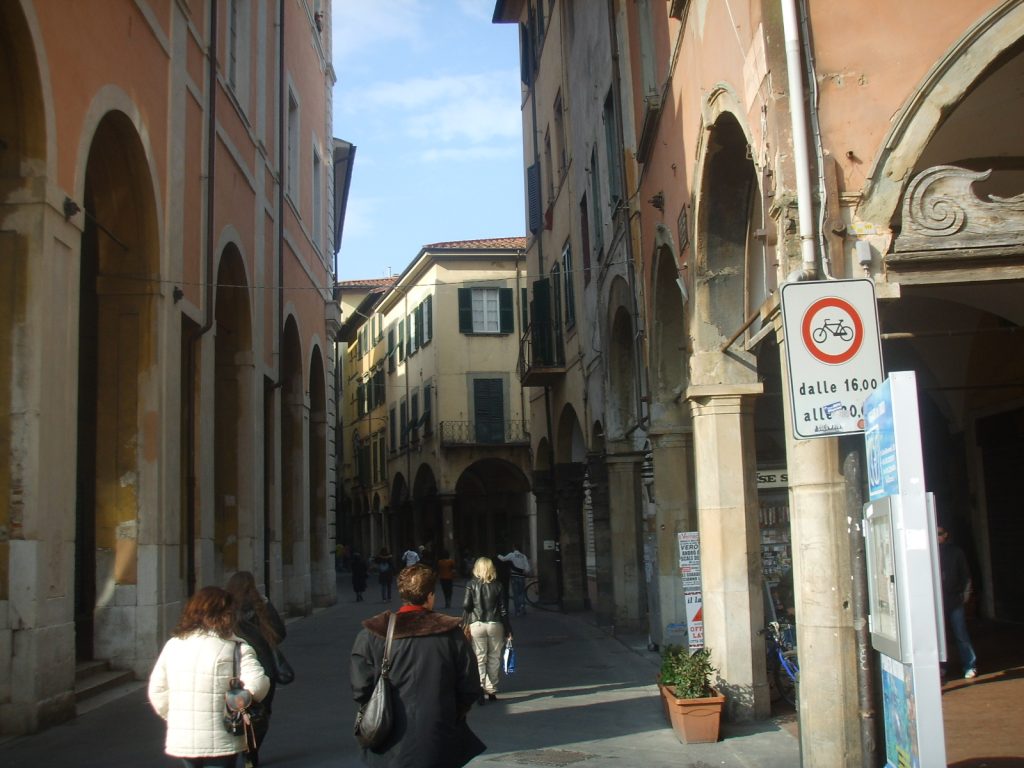
You will cross several important buildings along the way, including the Casino dei Nobili and the Roman baths called Bagni di Nerone. Also, this street is full of small boutiques and other clothing stores, so it is the perfect place for those who love shopping.
Ponte di Mezzo in Pisa
The river Arno flows just outside the city center and is perfect for a walk away from the hustle and bustle. While walking along Arno riverside, it is impossible not to see a beautiful bridge made of white stones called Ponte di Mezzo.
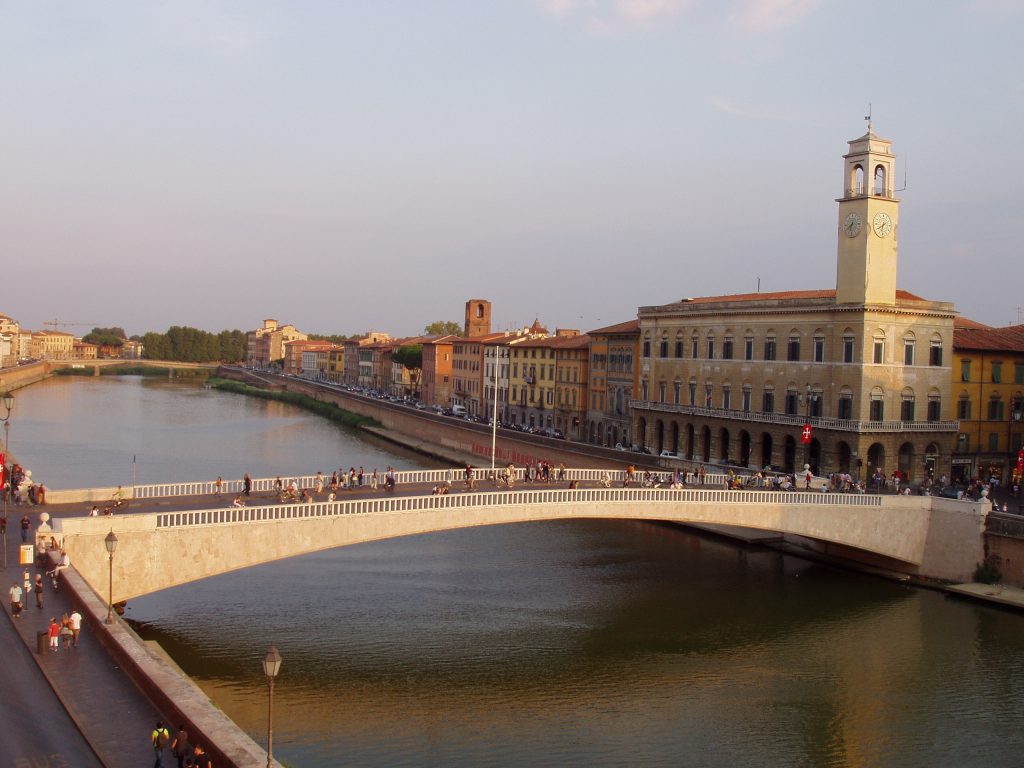
It is a popular place for taking amazing photos and having a fantastic view over the city. We recommend visiting the bridge at sunset or in the dark when everything is illuminated. The bridge is 89 meters long, so it is pretty big and was built in 1947.
Tuttomondo mural in Pisa
The most unusual attraction in Pisa is definitely the “Tuttomondo” mural created by famous American artist Keith Haring in 1989. It is located on the rear wall of the Sant’Antonio Abate church and represents 30 figures touching each other, linked together to symbolize the peace and harmony of the world. For those interested in art, this colorful mural is an absolute must-see because it creates a contrast to the other buildings in Pisa.
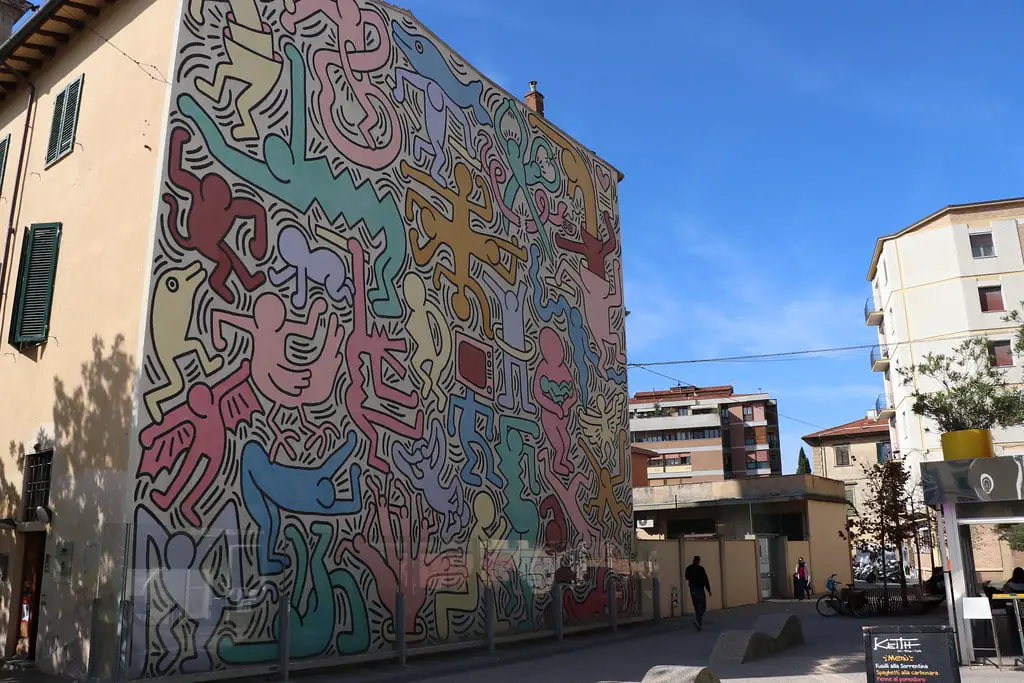
Botanical garden in Pisa
The botanical garden is located in the heart of Pisa and is maintained by the University of Pisa. It was built in the 16th century by the Medici family and has been relocated several times. Today, it hosts plants from every continent. There are the succulents of the African and American deserts, the aromatic plants of the Mediterranean scrub, the species of the Tuscan swamps, numerous old trees, and many others.
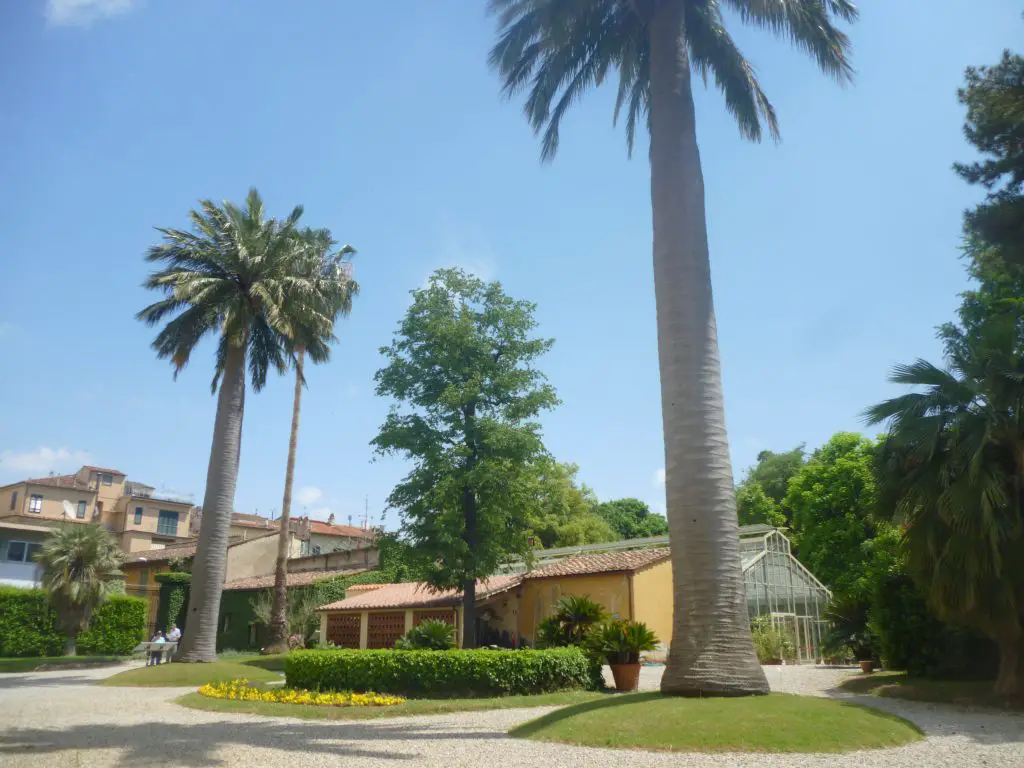
The garden is divided into several different sections including gardens, ponds, greenhouses, and an arboretum. The oldest trees in the garden were planted in 1787. The botanical garden is an amazing place to get away from crowds and enjoy beautiful nature.
Museums in Pisa
Pisa has a few museums that are really worth visiting especially if it is raining or if you like history. Keep in mind, that all museums require paid tickets.
National Museum of Saint Mathew in Pisa
The National Museum of Saint Mathew is located just next to Palazzo Vecchio de ‘Medici, on the bank of the Arno river. The museum building is the former Benedictine convent from the 11th century and inside you can see stunning sculptures and paintings from Tuscan schools from the 12th to the 14th century.
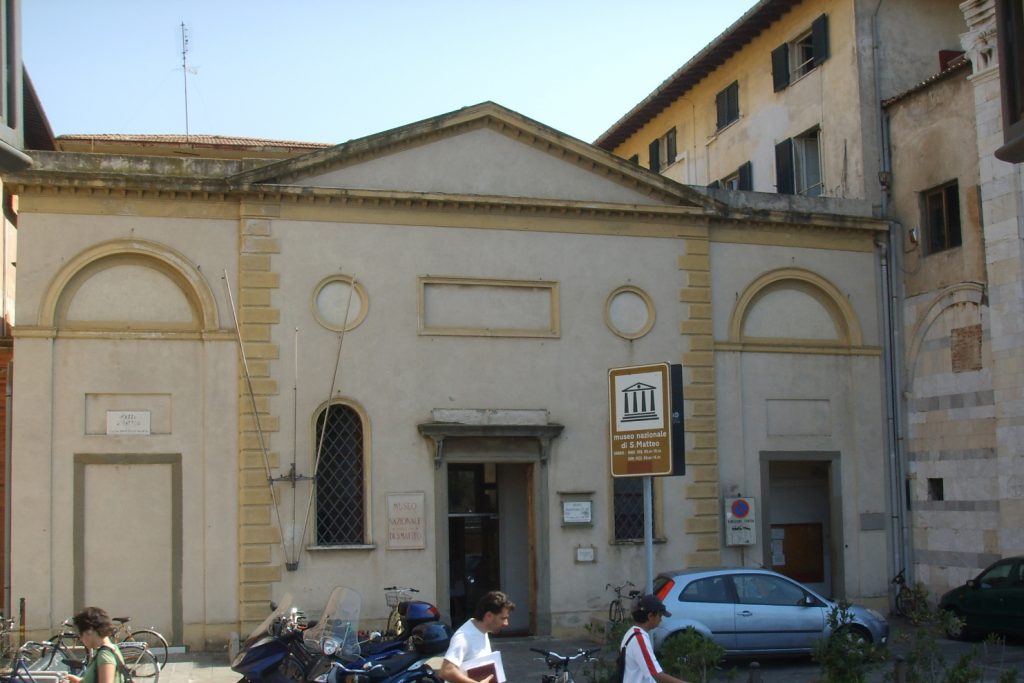
Also, visitors come to this museum to see ancient manuscripts, religious relics, archaeological excavation pieces, ceramics, and a famous sculpture called Madonna del Latte made by Andrea Pisano.
Works made by Francesco di Valdambrino, Donatello, Michelozzo, Andrea della Robbia, Lippo Memmi, Taddeo Gaddi, Gentile da Fabriano and Ghirlandaio are also a good reason why you should visit this beautiful museum.
Palazzo Blu in Pisa
Palazzo Blu is a blue building located on Lungarno Gambacorti and hosts the most important temporary exhibitions in Pisa. Since its opening in 2009, it has hosted numerous exhibitions including Chagall, Mirò, Picasso, Warhol, and many others. This beautifully restored 14th-century building has a blue facade which is quite untypical, so the building is an attraction for itself.
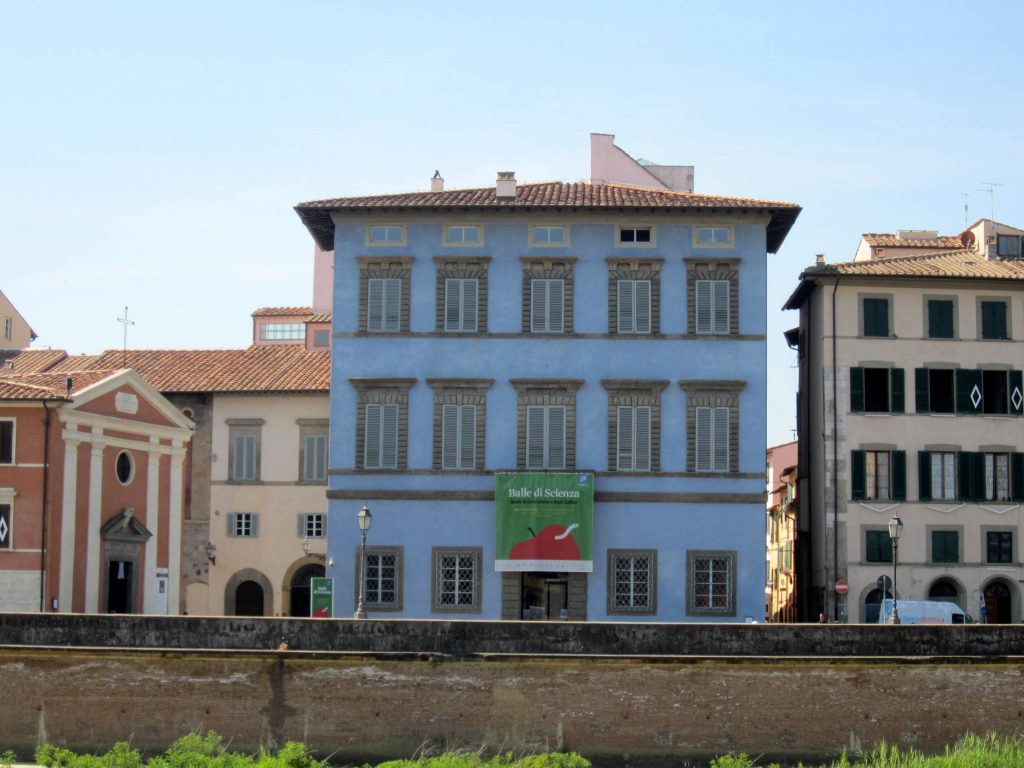
Museo delle Navi Antiche or “Museum of ancient ships” in the beautiful old Medici Arsenal and houses ships and other historical artifacts from the ancient Etruscans. Most of what is there was discovered during construction near the Pisa railroad station. The collection includes beautiful old ships and many other interesting items, so it is really worth visiting.
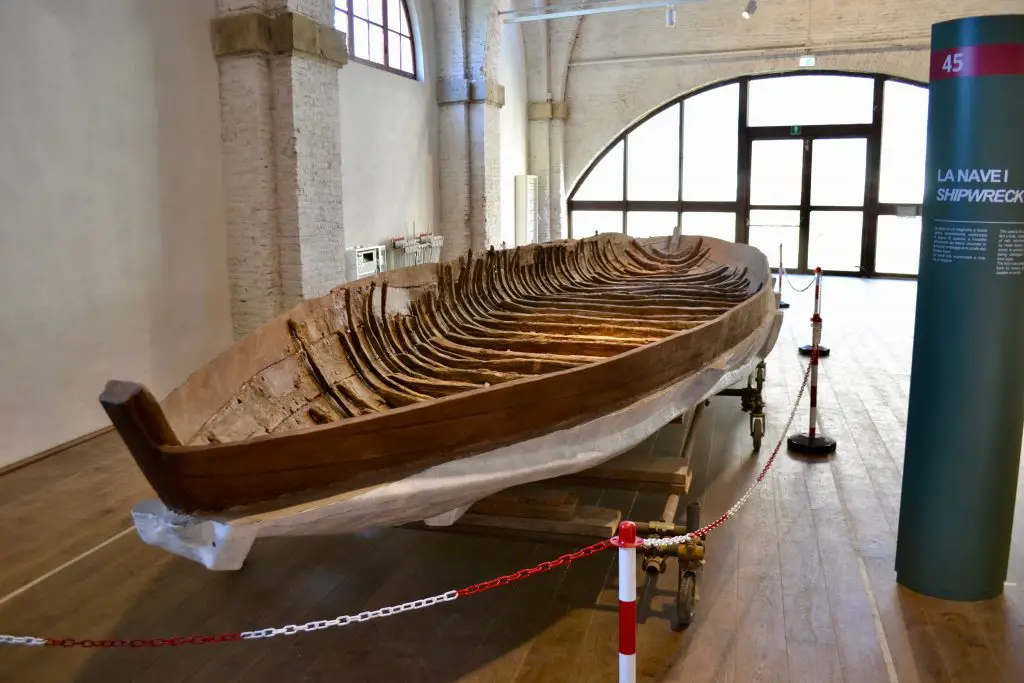
National Museum of the Royal Palace in Pisa
National Museum of the Royal Palace is the place where once was the city residence of the Grand Dukes of Tuscany. Today, it houses a gallery full of artworks, paintings, furnishings, tapestries, and armor belonging to the Medici and Savoy families who once lived there. We advise booking a guided tour because without it you will probably miss quite a lot in this museum.
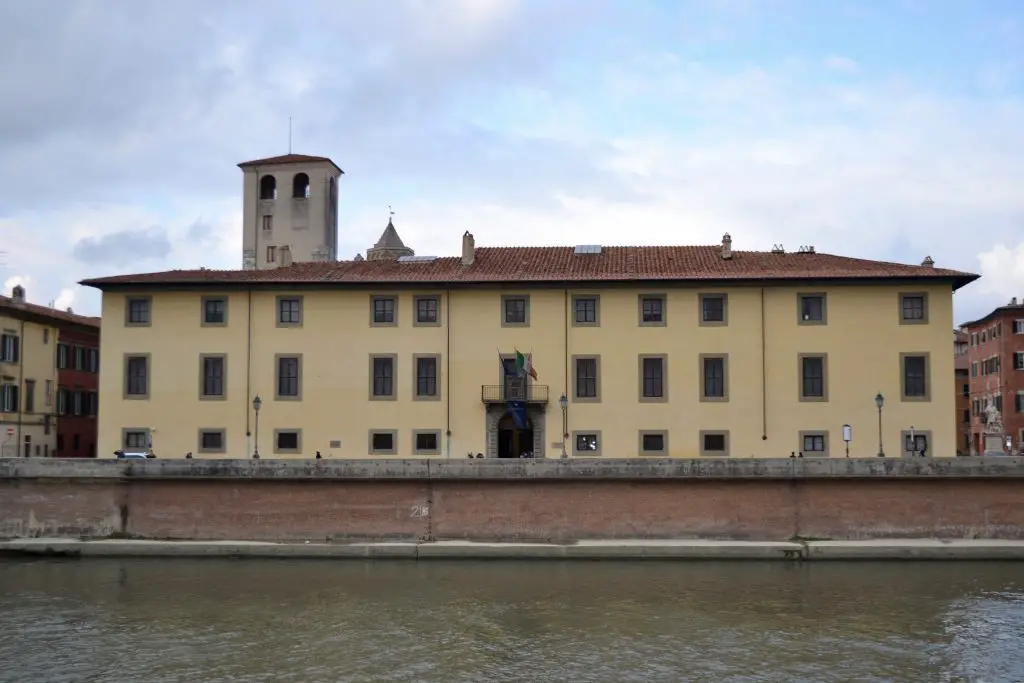
Museo dell’Opera del Duomo in Pisa
This little but beautiful museum exhibits the works of art usually presented in the cathedral and baptistery. Inside, you will find various sculptures, artworks, and artifacts that are situated in 26 exhibition rooms.
The most popular exhibits are the crown, the scepter, the globe, and the very refined drapery of Emperor Henry VII as well as a sculpture called “The Virgin and Child” made by Giovanni Pisano. Furthermore, the museum has a beautiful garden from where you will have a breathtaking view of the Leaning Tower.
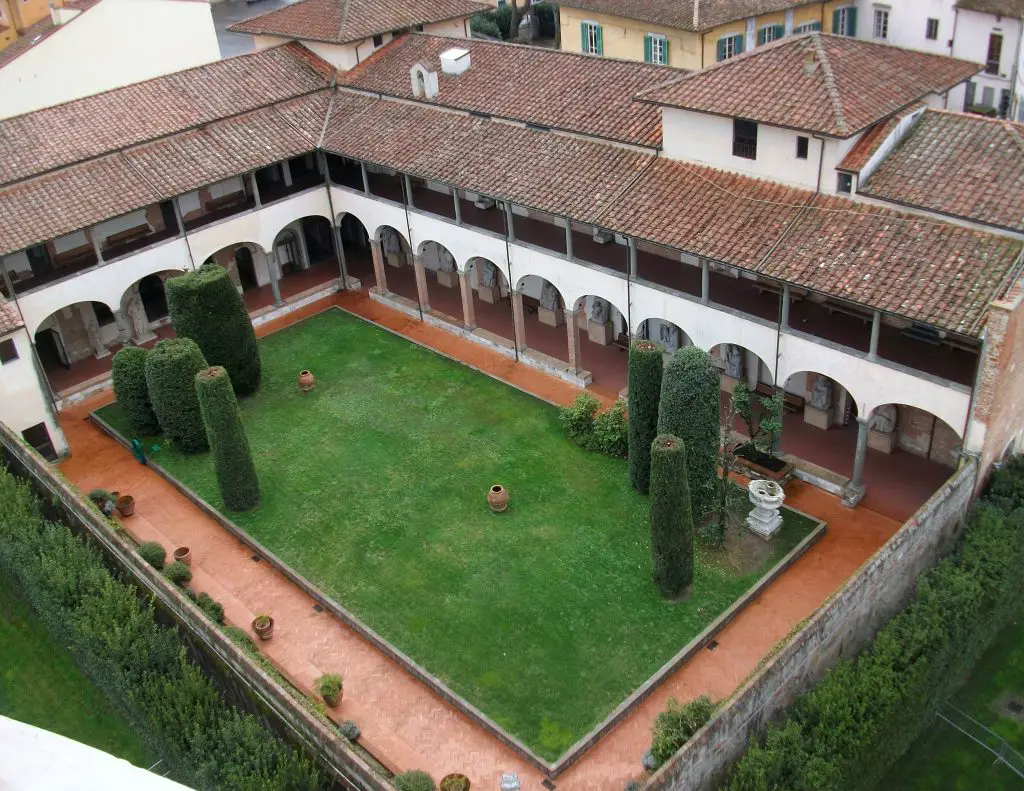
Shopping in Pisa
Most popular shopping places in Pisa are Borgo Stretto, Borgo Largo and Corso Italia. While the Borgo Largo is mainly home to designers and luxury brands, Corso Italia is cheaper with boutiques and small souvenir shops. Well-known fashion chains, as well as other shops, can be found in the Pisanova shopping center, which is about four kilometers from the old town.
Check out more articles about Pisa:

